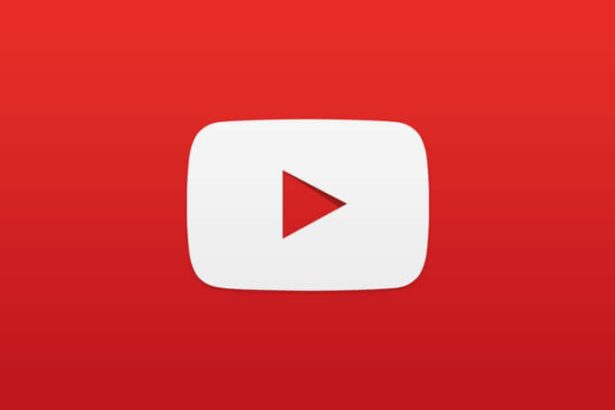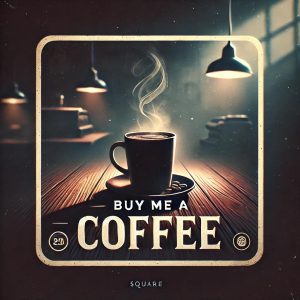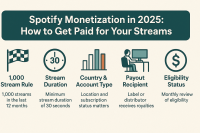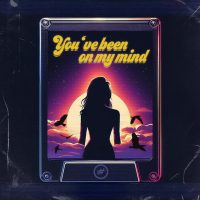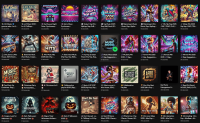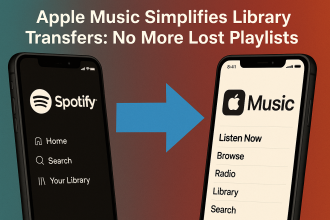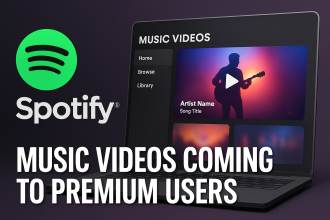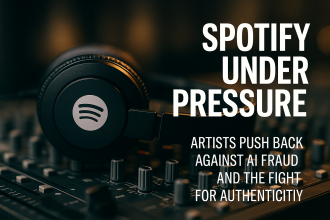Every year, music fans wait for their listening stats the way film lovers wait for festival line-ups. In 2025, YouTube Music is stepping ahead of the competition with a Recap experience that doesn’t just show you your year in music – it talks about it.
- From raw stats to narrative recap
- Musical Passport: mapping where your music comes from
- “Ask About Your Music”: AI as your personal listening analyst
- From recap feature to conversational music companion
- How to access your YouTube Music Recap 2025
- What it changes for listeners
- What it means for artists and the music business
- Recap wars and the new role of AI
The new edition introduces three pillars: an upgraded story-style Recap, a geographic Musical Passport that maps the origins of the artists you love, and an AI-powered “Ask About Your Music” feature that lets you chat with an assistant about your listening habits. It’s playful, a bit experimental, and clearly designed to be shared.
From raw stats to narrative recap
YouTube Music’s Recap started as a relatively simple summary: total listening time, top artists, standout songs. In 2025, it becomes a much more narrative experience designed for the social era.
The core features now include:
- A story-style reel that you swipe through, reminiscent of Instagram or Snapchat stories.
- Your total minutes listened over the year, plus highlights like your longest listening streak.
- A list of your top songs, artists, albums, genres and podcasts.
- Highlight cards that wrap your year into ready-to-share visuals.
Each card is formatted for quick export to social platforms. You can save them as images or share them directly from the app, turning your listening data into visually polished content. The message is clear: your taste in music isn’t just personal – it’s part of your online identity.
Musical Passport: mapping where your music comes from
The standout visual innovation in Recap 2025 is Musical Passport, a feature that adds geography to your listening story. Instead of just showing names, YouTube Music shows you where those artists come from.
Musical Passport can reveal, for example:
- How many countries and regions your favorite artists represent.
- Which part of the world dominated your listening this year.
- Whether your taste is mostly local or surprisingly global.
The feature reframes your listening habits as a kind of sonic travel diary. Instead of “you listened to Artist X”, you get a more evocative line like “you spent your year between Lagos, London and São Paulo”.
For listeners, it’s a fun way to realise how far their music discovery stretches. For YouTube Music, it’s also a subtle way to promote catalogue depth and push users toward more global exploration: if your Musical Passport looks “too small”, the app suddenly has a very good reason to recommend artists from new regions.
“Ask About Your Music”: AI as your personal listening analyst
The real headline feature is the AI layer. With Recap 2025, YouTube Music adds an interactive “Ask About Your Music” function: a conversational interface where you can ask questions about your own listening history.
This AI feature lives on the Recap page and lets you type prompts such as:
- “How did my listening change this year?”
- “Was my year more chill or more energetic?”
- “Describe my 2025 music taste as a movie plot.”
- “What kind of animal would my listening habits be?”
Behind the scenes, YouTube Music combines your actual listening data with a large language model (from the Gemini family) to generate answers. The AI:
- Analyses what you’ve listened to, how often, and when.
- Transforms those stats into short narratives, personality-style descriptions, or even mini poems.
- Can produce shareable visuals or captions based on your prompts.
It’s not meant to be a scientific tool. Like any generative AI, it sometimes contradicts itself or gives slightly off results if you ask the same question twice. YouTube Music presents it more as an interactive storytelling feature than as an exact data dashboard. The goal is to spark conversation, not to replace your royalty statement.
From recap feature to conversational music companion
Although Recap is promoted as a once-a-year experience, the underlying idea points to the future of streaming. YouTube Music is testing how comfortable users are with an AI layer that:
- Understands their habits in natural language.
- Accepts free-form requests like “make me a playlist that feels like my summer 2025, but with more Afro house and fewer sad songs.”
- Turns cold statistics into memorable, shareable storytelling.
In other words, Recap 2025 doubles as a public beta for a more conversational way of using a streaming service. If fans enjoy asking the AI to comment on their year, they’re more likely to accept AI as a permanent layer in everyday listening: for discovery, for mood-based programming, or even for planning music at events and workouts.
How to access your YouTube Music Recap 2025
Accessing Recap 2025 is designed to be straightforward and mobile-first. To find it:
- Open the YouTube Music app on your smartphone and sign in.
- Tap your profile icon in the top-right corner.
- Look for a section labelled “Your Recap” or a banner promoting your 2025 recap.
- Tap to launch the story-style experience and start swiping.
You can then:
- Save individual cards as images to your phone.
- Share them directly to Instagram, X, WhatsApp, or other social platforms.
- Export playlists summarising your year (for example, a “Your 2025 Highlights” playlist).
Who gets a Recap?
Not everyone will see Recap instantly. YouTube Music typically requires:
- A minimum amount of listening over the year (for example, several hours and repeated plays).
- Watch and listening history to be enabled in your account settings.
If your Recap doesn’t appear, it often means there isn’t enough data yet, your history has been auto-deleted too aggressively, or the rollout has not reached your region or account.
What it changes for listeners
For listeners, Recap 2025 turns statistics into a kind of annual ritual:
- You get a mirror of your year – the artists you looped, the tracks you couldn’t shake, the genres that defined certain months.
- You get a game – prompts, metaphors, imaginary animals, weather reports and personality-style descriptions that transform your taste into social content.
The AI element makes the experience more flexible. Instead of passively consuming a fixed set of cards, you can probe the system with your own questions and see what comes back. That sense of co-creation is exactly what platforms are chasing in 2025: users don’t just watch or listen, they interact.
What it means for artists and the music business
For artists, Recap isn’t just a fan toy; it’s another front in the competition for attention. When YouTube Music produces recap cards, there are only a handful of truly prime spots:
- The top artists section.
- The top songs section.
- The genre highlights and listening milestones.
If you can land in those, you’re effectively given free advertising in your listeners’ social feeds when they share their cards. That’s why consistent releases, strong artwork, and multi-format presence (audio + Shorts + live sessions) matter: they increase your chances of becoming part of somebody’s “year in music”.
On YouTube’s side, there is also a creator-facing layer:
- Artist dashboards and recaps that summarise yearly performance.
- Shareable cards with total watch time, key territories, and biggest songs.
As AI gets more integrated, it’s easy to imagine future tools where artists can ask questions like:
- “Which market discovered me the fastest this year?”
- “How different is my Recap audience from my Shorts audience?”
- “What kind of fans stream my music the most at night vs during the day?”
The 2025 Recap doesn’t go that far yet, but it clearly points in that direction.
Recap wars and the new role of AI
Spotify Wrapped, Apple Music Replay, Deezer’s yearly recaps, and now YouTube Music Recap 2025: it’s no longer just about numbers. It’s about narrative and identity.
YouTube Music’s approach this year can be summed up in one idea:
Your listening data is a story – and AI is the narrator.
By combining story-style visuals, a global Musical Passport and conversational AI, YouTube Music is betting that the future of streaming is not simply personalised, but interpreted. The platform doesn’t just track what you hear; it proposes a reading of who you are as a listener.
Whether that feels insightful, strange or just entertaining will vary from user to user. But one thing is certain: in 2025, the most powerful way for a streaming platform to keep you engaged is no longer just to play your favourite songs – it’s to explain them back to you in a way that feels personal, shareable and a little bit clever.
![]()

